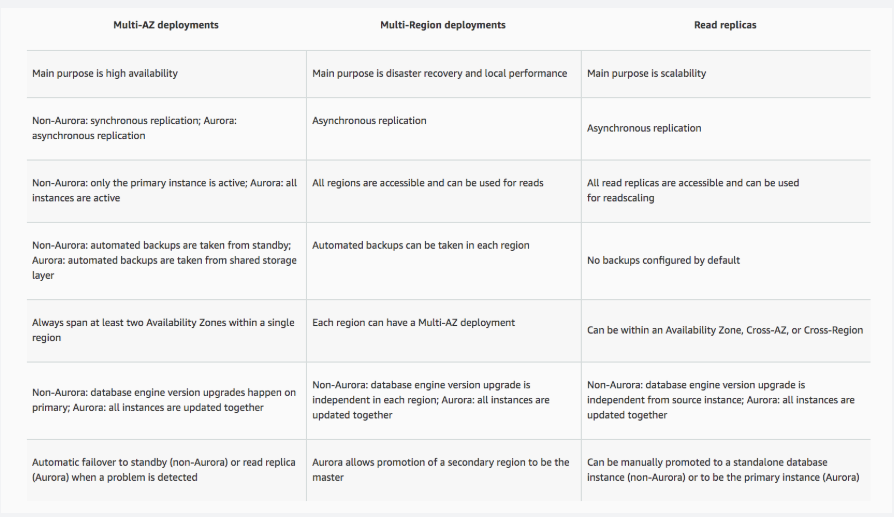Multi AZ vs Read Replica
There are many notable difference for MultiAZ and Read replica, here in this blog I would like to restrict to only main points
When you provision a Multi-AZ DB Instance, Amazon RDS automatically creates a primary DB Instance and synchronously replicates the data to a standby instance in a different Availability Zone (AZ). where as In case of Read Replica, For the MySQL, MariaDB, PostgreSQL, Oracle, and SQL Server database engines, Amazon RDS creates a second DB instance using a snapshot of the source DB instance. It then uses the engines’ native asynchronous replication to update the read replica whenever there is a change to the source DB instance
The main objective of Multi-AZ is ” In case of an infrastructure failure, Amazon RDS performs an automatic failover to the standby (or to a read replica in the case of Amazon Aurora), so that you can resume database operations as soon as the failover is complete”
Amazon RDS Read Replicas provide enhanced performance and durability for RDS database (DB) instances. They make it easy to elastically scale out beyond the capacity constraints of a single DB instance for read-heavy database workloads. You can create one or more replicas of a given source DB Instance and serve high-volume application read traffic from multiple copies of your data, thereby increasing aggregate read throughput. Read replicas can also be promoted when needed to become standalone DB instances. Read replicas are available in Amazon RDS for MySQL, MariaDB, PostgreSQL, Oracle, and SQL Server as well as Amazon Aurora.

Can’t Set Backup Retention Period to 0 an RDS instance for which read replicas are in place
Maintenance for Multi-AZ Deployments
Running a DB instance as a Multi-AZ deployment can further reduce the impact of a maintenance event, because Amazon RDS applies operating system updates by following these steps:
- Perform maintenance on the standby.
- Promote the standby to primary.
- Perform maintenance on the old primary, which becomes the new standby.
When you modify the database engine for your DB instance in a Multi-AZ deployment, then Amazon RDS upgrades both the primary and secondary DB instances at the same time. In this case, the database engine for the entire Multi-AZ deployment is shut down during the upgrade.